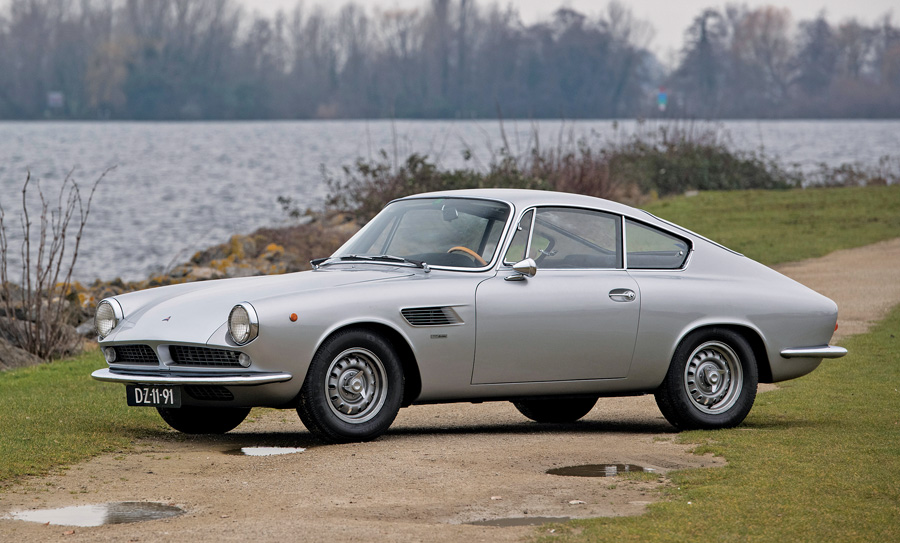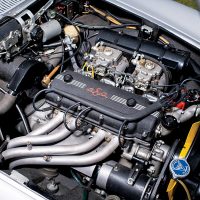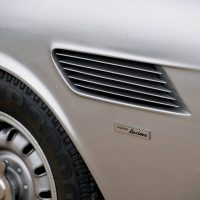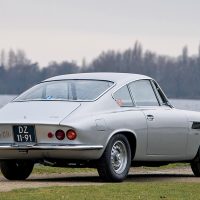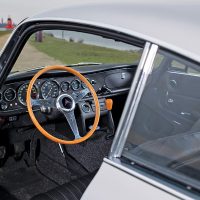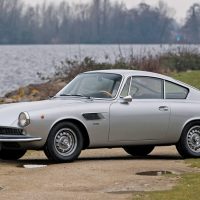SCM Analysis
Detailing
| Vehicle: | 1964 ASA 1000 GT |
| Years Produced: | 1962–67 |
| Number Produced: | Approximately 90 (coupes) |
| Original List Price: | $6,500 |
| SCM Valuation: | $146,911 |
| Chassis Number Location: | Tag on wall of engine compartment, stamped on side panel of compartment |
| Engine Number Location: | On right-side end of block near bellhousing |
| Alternatives: | 1962 Abarth Simca 1000, 1963 Lancia Appia Sport, 1964 Glas 1300 GT |
| Investment Grade: | B |
This car, Lot 115, sold for $154,381 (€138,000, €1=$1.12), including buyer’s premium, at RM Sotheby’s Villa Erba, Italy, sale on May 25, 2019.
There was a classical music radio host named Karl Haas. He was a brilliant musicologist whose syndicated show, “Adventures in Good Music,” introduced and entertained millions of listeners with the best in classical music. He often aired segments titled “Rare and Well Done,” in which he played superb performances of little-known works.
I immediately recall Mr. Haas and his sonorous, German-accented voice whenever I encounter an ASA 1000 — for me one of the greatest examples I know of “Rare and Well Done” in the automotive canon.
An excellent book on the background and cars of ASA was written in 2004 by Franco Varisco and published by Giorgio Nada. In Italian, it tells the fascinating story of how Enzo Ferrari — and all of the top engineers in his racing department — worked to create an 850-cc, 4-cylinder-powered car in 1959, which he had little intention of bringing to the market.
This isn’t shocking when you remember that when the V6 Dino was introduced — followed by the V8 308 GT4 — Enzo Ferrari had problems putting the Prancing Horse and his name on a road car without 12 cylinders. But Enzo did invite journalists at his 1959 year-end press conference to come and test the small prototype to evaluate and report on its performance.
Everyone in the room was shocked. He was, in fact, also quoted at that time saying that the car would carry a name very dear to him — which was, of course, Dino.
Enter the ASA 1000
To that end, the development of the 854 engine proceeded through the building of a Pinin Farina-designed-and-built coupe on a shortened and modified Fiat 1100 coachbuilders’ platform. The little Ferrari engine found a home. The car was equipped with 4-wheel disc brakes. The Ferrari F1 team tested the “Ferrarina” coupe at Monza, and the little car handily met its goals.
It is thought that perhaps Ferrari intended to sell the engine to Fiat as a replacement or addition to the 1200 line, but the Torinese were already working with OSCA on the 1500 twin-cam model. Between that and Fiat’s relationship with Abarth for the smaller-displacement sporting cars, there was little room for any such collaboration with Ferrari.
So the search began for a manufacturer to take up the engine for, as Ferrari put it himself, “a car for young people who love GT cars but unfortunately do not have the means to think of realizing in actuality.”
That the project might also provide Ferrari with a homologated Formula 2 powerplant was a bonus. The ASA company was set up, commissioned the body by Giorgetto Giugiaro at Bertone, instigated an enlargement in displacement to 1,032 cc, and by early 1963, was off and running.
All of that is but prelude to what resulted — a brilliant execution and delivery on a car no one actually seems to have wanted when it was new.
Big bucks for a little car
The ASA 1000 GT was frighteningly expensive — over $6,000 in 1963 at a time when a Ferrari 250 GTE cost $11,000. A Corvette coupe listed for $4,200 — with a 327-ci 8, compared to the 1-liter inline 4-cylinder in the ASA.
So the ASA 1000 GT was beautiful, an especially big challenge for a small car. It was carefully built, exquisitely finished and detailed, and entertaining to drive.
But the only connection it had to its creator was that it was distributed in the U.S. by Luigi Chinetti, the owner of the North American Racing Team and Ferrari’s East Coast distributor. That wasn’t quite enough. On top of it all, Ferrari never used the engine in F2, thereby also cutting off a possible avenue for cross marketing.
By virtue of these facts, the “well done” ASA also became the “rare” ASA, with fewer than 100 coupes and about a half-dozen spiders leaving the factory and finding buyers. A short and less-than-brilliant competition career spanned 1965 and 1966.
Nevertheless, the difficult realities of a car when it’s competing in a tough market space have relatively little to do with its appeal as an object of collector veneration.
Now very collectible
The ASA 1000 has much to offer. For concours duty, it is unusual, lovely and well formed. For rallies and tours, it is handy, quick — if not fast — comfortable and vastly entertaining. The imagined drawback to these cars among those who even knew they existed was fear of running them — how could you ever find parts for such an exotic and rare engine?
The answer is twofold.
First, values have certainly risen to the point that in the event of something catastrophic occurring, parts can be made. Second, contrary to belief, parts do indeed exist. I have personally seen a small warehouse in Northern Italy lined with shelves from floor to ceiling with engine parts for the ASA 1000. Blocks, crankshafts, camshafts, pistons, valves and more — all in original packaging — await the needy owner.
What might be a concern is what might happen to that stock should the aging owner suddenly no longer appear at his shop or if a visitor were to find a strange chain and padlock across the bolt.
But if we wanted old-car ownership to be safe, we would all drive mass-production cars, wouldn’t we?
The one that got away
The ASA 1000 also counts as one of my personal “if only” stories. Back in 2007, when values were in the $30k–$40k range for a nice coupe, I was prepared to spend $60k at auction for a spider.
It sold for $99,000, and I was devastated.
But I thought I still had time to eventually find the right coupe. How wrong I was! Good examples have been selling between $100,000–$150,000 for quite a while now and show no sign of softening.
I tortured myself by sitting in this car during the preview on Lake Como. I didn’t want to get out, but RM Sotheby’s has very effective security.
These are still cars that appeal to a fairly narrow market — explaining your car has to be part of the thrill of ownership, as few will recognize what it is at a glance. But for the right owner, the warm feeling of using it will be enough. This price was high, but understandable. ♦
(Introductory description courtesy of RM Sotheby’s.)
